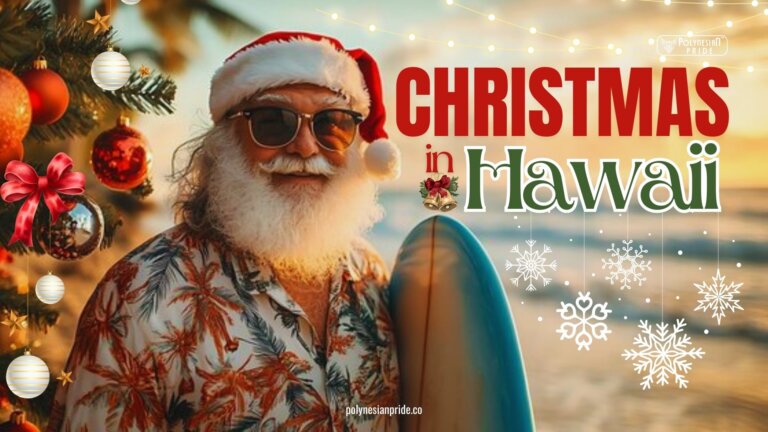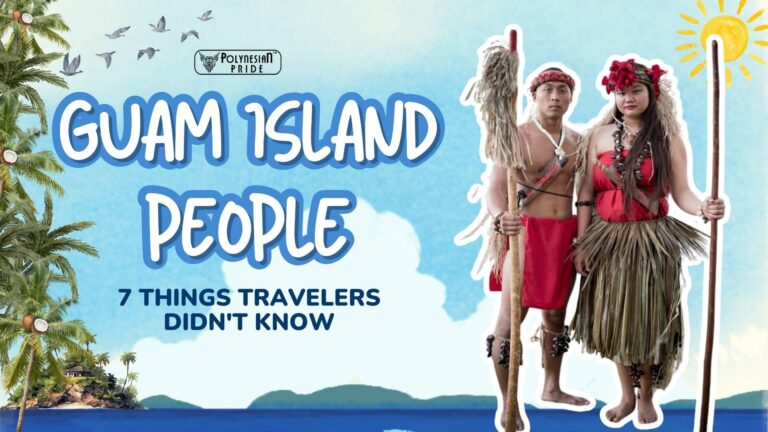10 Facts about Maori Culture: Unveiling Traditions, Art & Spirituality

New Zealand, a land of breathtaking landscapes, also boasts a rich cultural tapestry deeply rooted in its indigenous Maori people for over 800 years. Delve into a treasure trove of facts about Maori culture, exploring their traditions, art, and spirituality. These elements continue to shape New Zealand’s identity and offer a deeper appreciation for this unique nation. Let’s journey through the fascinating world of Maori customs and practices.
Facts about Maori Culture No. 1: The Haka is Not Just a “War Dance”
The haka is one of Maori culture‘s most iconic and recognizable aspects. This traditional dance features powerful movements, fierce facial expressions, and rhythmic chants. However, there is much more to the haka than meets the eye.

Origins and Historical Context
The haka originated as a war dance, used by Maori warriors to intimidate their enemies and strengthen their courage before battle. Its intense energy and intimidating nature made it a formidable display of strength and unity.
Over time, the haka evolved to encompass various forms and uses, reflecting the dynamic nature of Maori culture. It became a means of communication, a way to express emotions, and a form of storytelling. Each haka is unique and may be performed for different purposes, such as welcoming guests, celebrating events, or paying tribute to ancestors.
Cultural Significance
Today, the haka is particular in Maori culture and plays a vital role in various ceremonies and events. It is also an essential part of New Zealand’s identity, with its influence extending beyond Maori culture. The New Zealand All Blacks, the country’s national rugby team, famously perform the haka before each match to inspire and unite.
Moreover, the haka has gained global recognition and respect, with many groups learning and performing it worldwide. This serves as a testament to its enduring cultural significance and impact.
Fact No. 2: No Two Maori Tattoos are Identical
The art of tattooing holds a unique place in Maori culture. Each design reflects personal identity and heritage. Unlike most modern tattoos, which are chosen from a catalog, traditional Maori tattoos, known as Ta Moko, are unique to the individual.

The Tradition of Ta Moko
Ta Moko is a form of tattooing that uses chisels and ink to create intricate designs on the skin. The process is sacred and involves both physical and spiritual preparation. The tools used for Ta Moko are often passed down through generations, making them heirloom pieces.
Symbolism and Personal Meaning
Each element of a Ta Moko design holds deep symbolism and tells a personal story. These designs represent one’s genealogy, social status, and personal history. They are also believed to offer protection and connect the wearer to their ancestors and the spiritual realm.
Revival and Contemporary Practices
Ta Moko experienced a decline in the 20th century due to colonization and the introduction of Christianity. However, in recent years, this ancient tradition has been resurrected, with many Maori artists reclaiming and reviving it.
Contemporary practices blend traditional and modern elements, such as using tattoo machines instead of conventional chisels. Ta Moko is also gaining popularity among non-Maori, with many getting tattoos inspired by Maori designs. However, it is essential to note that Ta Moko is a sacred tradition and should only be done by qualified and culturally sensitive artists.
Fact No. 3: Te Reo Māori is One of the Three Official Languages of New Zealand
Te Reo Māori, or the Māori language, is an essential aspect of Māori culture and holds great significance in New Zealand’s history and identity.

Historical Background
Before colonization, Te Reo Māori was the primary language spoken in Aotearoa (New Zealand). However, with the arrival of European settlers and efforts to assimilate Maori into Western culture, the use of Te Reo Maori declined drastically. By the 1980s, it was estimated that only 20% of Maori were fluent in their native language.
Current Status and Initiatives
In recent years, a significant effort has been made to revitalize and preserve Te Reo Māori. In 1987, it was recognized as one of New Zealand’s official languages, alongside English and sign language. This acknowledgment has led to various initiatives to promote and teach Te Reo Māori.
Efforts are being made to integrate Te Reo Māori into everyday life, such as street signs, government documents, and media. Immersion programs and schools dedicated to teaching the language exist, and many universities offer courses on Te Reo Māori.
Education and media are crucial in revitalizing Te Reo Māori and ensuring its survival for future generations. This language holds deep cultural and historical significance, and its preservation is vital in understanding and honoring Maori culture.
Fact No. 4: How Maori Cook Their Food Underground
In Maori cuisine, they have a unique cooking method known as hangi, which involves cooking food in an underground pit. This traditional practice dates back centuries and is still widely used today.

The Hangi Method
The hangi process begins by digging a pit in the ground and heating volcanic rocks over a fire until they are scorching hot. The hot stones are placed at the bottom of the pit, followed by layers of food, such as meat, vegetables, and seafood. The food is then covered with wet cloths and earth, trapping the heat and steam to simmer the food.

Cultural Importance
Hangi holds great cultural significance for the Maori, representing their connection to the land and their ancestors. It is often used for special occasions like weddings, funerals, and other important ceremonies. Sharing a meal from the hangi pit is also seen as a way to strengthen relationships and unite people.
Moreover, the hangi method reflects Maori values of sustainability and community. By cooking their food using natural elements from the land, the Maori demonstrate their respect and harmony with nature.
Modern-Day Practices
While hangi is still widely used for special occasions and cultural events, it has also evolved to fit modern-day practices. Many contemporary Maoris use hangi pits equipped with gas burners, which allow quicker cooking time. Some even use portable hangi boxes, which can be used in urban areas.
Fact No. 5: Traditional Maori Greeting is Not a Handshake
Traditional greetings play a significant role in Maori culture, reflecting their values and beliefs. One of the most well-known greetings among the Maori is the hongi, which involves pressing the foreheads and noses.

Traditional Greeting: Hongi
The hongi is a sign of respect and friendship, symbolizing the sharing of breath and the coming together of minds. It is believed that connecting through the hongi also connects with their ancestors and the spiritual realm.
Cultural Significance
In Maori culture, the head is considered sacred, and touching foreheads and noses is seen as a way to honor and show respect for one another. The hongi is often performed during formal occasions, such as gatherings on a marae (Maori meeting ground).
Fact No. 6: Greenstone – A Symbol of Maori Heritage and Value
Greenstone, or pounamu, is a type of jade that is highly valued in Maori culture. It holds great cultural and spiritual significance and is used in various forms, such as jewelry, tools, and weapons.

Cultural and Spiritual Significance
Greenstone is considered a taonga (treasure) among the Maori people and holds deep spiritual and cultural value. It is believed to have healing properties and is often worn for protection and strength.
Uses and Symbolism
Greenstone is intricately woven into tradition as a powerful Maori symbol, representing strength, resilience, and a deep connection to the land. It is also used to represent social status and can take different forms depending on one’s standing in society.
Fact No. 7: Formal Welcome Required on a Maori Meeting Ground
The Maori people have a unique way of welcoming guests onto their marae (meeting ground). This formal ceremony, known as powhiri, is an essential aspect of Maori culture.

The Process of Powhiri
Powhiri process begins with a karanga (traditional call) from a female speaker, followed by speeches from both the host and guests. The hongi greeting is performed before entering the marae, where more speeches, singing, and other customs occur.
Cultural Importance
Powhiri is a way for the Maori to honor and show respect to their guests and ancestors. It is also a way to maintain the mana (prestige) of the marae and ensure that all who enter do so with good intentions.
Fact No. 8: Maori Have a Strong Art Tradition
The Maori people have a rich tradition of art, encompassing various forms such as carving, weaving, and tattooing. These art forms serve as aesthetic expressions and play a vital role in preserving Maori culture.

Traditional Art Forms
Carving (whakairo), weaving (raranga) in Maori traditional clothing, and tattooing (Ta Moko) are some of the most well-known art forms among the Maori. These crafts have been passed down through generations and are still practiced today.
Symbolism and Storytelling
Traditional Maori art is deeply rooted in symbolism and storytelling, with every design holding personal and cultural significance. These art forms pass down stories and preserve cultural heritage, ensuring its continuity for future generations.
Fact No. 9: Tikanga is Important for Everyone
Tikanga refers to Maori customs and traditions governing social interactions, ceremonies, and daily life. These practices are essential for maintaining respect and harmony within the community.
Understanding Tikanga
Tikanga has its roots in traditional Maori customs and beliefs, and while it may vary among different iwi (tribes), the core values remain the same. It encompasses everything from how one should greet others to how food should be eaten.
Cultural Practices
Tikanga is an essential aspect of Maori culture. While it may seem foreign to outsiders, it is vital to understand and respect these customs when engaging with Maori communities. Doing so can build stronger relationships and foster a deeper understanding of Maori culture.
Fact No. 10: There’s a Legend About Everything
Maori culture is rich in legends and myths, passed down through generations to explain natural phenomena and cultural practices. These stories are integral to Maori identity and continue to be shared and celebrated in modern times.
Rich Oral Traditions
The Maori have a strong oral storytelling tradition, with many of their stories passed down through word of mouth. These stories often teach essential lessons or explain the world around them.
Examples of Legends
One of the most well-known legends in Maori culture is that of Maui, the demigod responsible for fishing up the North Island of New Zealand. Another legend tells how New Zealand was created by the god Tane Mahuta. These stories offer insight into Maori beliefs and showcase the deep connection between the Maori people and their land.
Conclusion
In this article, we have explored ten critical facts about Maori culture and gained a deeper understanding of its significance in New Zealand’s identity. From the multifaceted nature of the haka to the importance of Tikanga in daily life, each aspect of Maori culture reflects the resilience, ingenuity, and profound connection to the land of the Maori people.
As we have seen, Maori culture is not static; it continues to evolve and adapt in contemporary society while maintaining its traditional roots. It is vital to recognize the ongoing influence of Maori traditions and practices in modern New Zealand and to engage with them respectfully.
We hope this article has sparked your curiosity about Maori culture and inspired you to appreciate the vibrant tapestry at the heart of New Zealand’s identity.
Frequently Asked Questions
What are 10 facts about Maori Culture?
This article explores ten key aspects of Maori culture:
The haka (powerful dance)
Ta Moko (traditional Maori tattooing)
Te Reo Maori (the Maori language)
Hangi (underground cooking method)
Hongi (traditional Maori greeting)
Greenstone (pounamu) – a prized cultural treasure
Powhiri (formal welcome ceremony)
Traditional Maori art forms (carving, weaving, tattooing)
Tikanga (customs and traditions)
Maori legends and myths
What is Maori culture known for?
Traditional Māori arts play a large role in New Zealand art. They include whakairo (carving), raranga (weaving), kapa haka (group performance), whaikōrero (oratory), and tā moko (tattoo). The patterns and characters represented record the beliefs and genealogies (whakapapa) of Māori.
How old is Maori culture?
One 2022 study using advanced radiocarbon technology suggests that “early Māori settlement happened in the North Island between AD 1250 and AD 1275”
What are the 5 Maori values?
These values include:
Ngā matatini Māori: Māori diversity. ..
Kotahitanga: Māori unity, shared sense of belonging. …
Tino rangatiratanga: Self-determination, ownership, control. …
Whanaungatanga: An ethic of belonging, kinship. …
Kaitiakitanga: Guardianship of natural resources. …
Wairuatanga: Spirituality.

I am Leilani Miller – I research focusing on Vanuatu – volcanic landscapes, blue holes, coral reefs & rainforests. I have over five years of experience researching and sharing insights on tourism and environmental activism. Explore and experience without limits through my latest article.
Contact information:
Email: [email protected]
Tel: +1 (808) 555-1528






